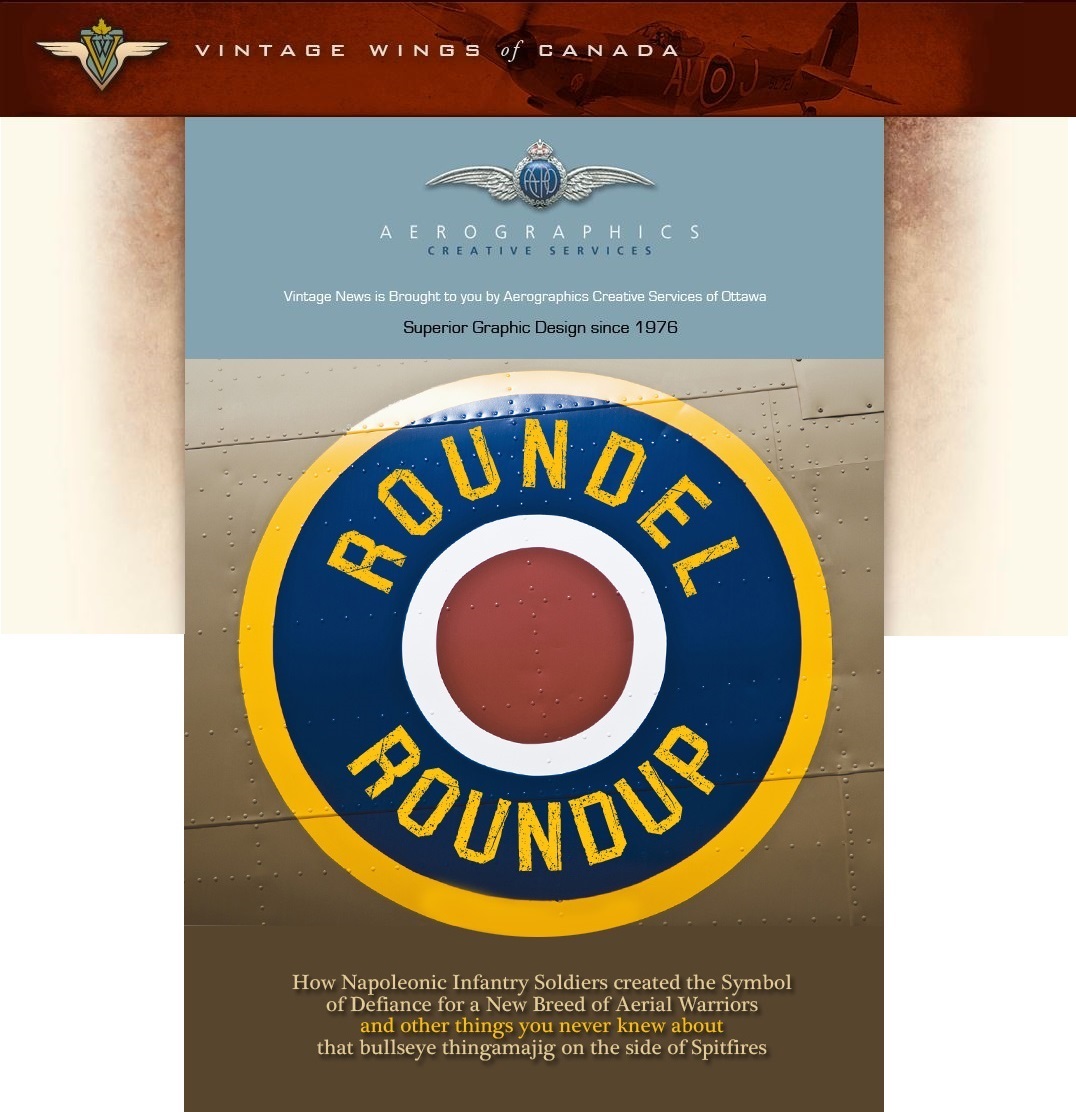A brilliantly researched and written paper on the history of the British Empire Roundel insignia.
By Dave O’Malley
If I had a dollar for every time someone asked me, during a tour of Vintage Wings of Canada or at an air show: “Whaddya call that bullseye thingamajig there?” or “How come the bullseye on the wing has no white in it like the bullseye on the side of the plane?” or “Doesn’t Canada have a maple leaf in their bullseye?”, I would be able to afford my own bullseye-emblazoned Spitfire. These curious neophytes, of course, are speaking about the Royal Air Force (RAF), Royal Canadian Air Force (RCAF) and Royal Navy (RN) “roundels” which, for nearly a century, have identified aircraft in the service of the King or Queen of the realm. The truth is most people, even those who are knowledgeable about warbirds, have no idea where the roundel comes from, why certain roundels are used on aircraft of a certain vintage, or why there may be three different types of roundels on the same aircraft. This article tries to explain some of the history and demonstrate the use of the various roundel styles over the years. I do so at great risk of being labelled a seriously unbalanced, basement-dwelling aerogeek, lost in minutia and losing sight of the big picture. I also do so knowing that I actually don’t know everything about the esoterica that is roundel usage and run an added risk of being ridiculed by those whose life work is the study of seemingly insignificant details. Despite the risks to my reputation and the possibility that I may be labelled a rivet-counting history whore, I do, in fact, find this very interesting stuff.
The Royal Air Force roundel of the Second World War is derived from the original Royal Flying Corps (RFC) roundel of the First World War, which was in turn derived from a traditional martial decorative device known as the “cockade”. The cockade is a knot of ribbon, or other circular- or oval-shaped symbol of distinctive national colours which was usually worn on a soldier’s clothing, in particular on head gear. In the 18th and 19th century, various European states used cockades to denote the nationalities of their military. Even Union and Confederate soldiers of the Civil War often wore cockades or “rosettes” on their dress uniforms and for formal photographs. Along with NCO chevrons, brass buttons, ribbons, awards and epaulettes, the cockade was an item of military dress and distinction. More importantly, its colours were often those of the country it represented. Read more
